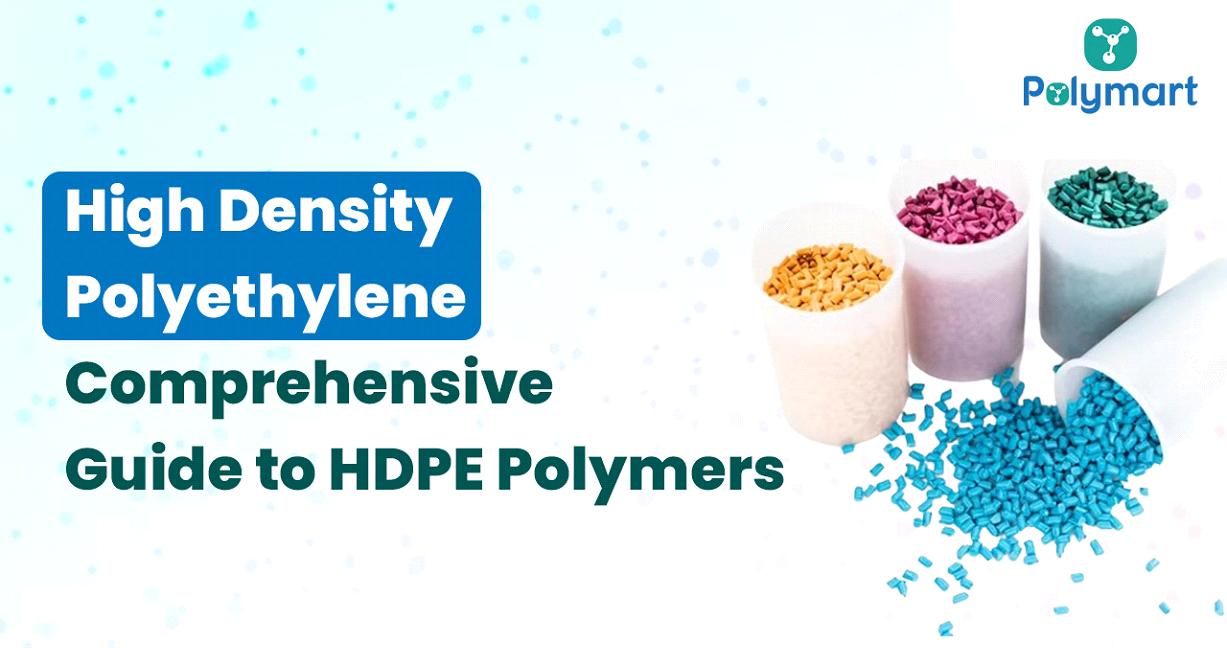HighDensityPolyethylene-Comprehensive GuidetoHDPE ThermoplasticPolymer

Polyethylene (Polythene) is one of the world’s most popular plastics. It is an enormously versatile polymer which is suited to a wide range of applications from heavy-duty damp-proof membranes for new buildings to light, flexible bags and films
Polyethylene (PE) on the other hand, is classified into two types: low density and high density In particular, for this moment we will learn about HDPE HDPE stands for high-density polyethene, a type of plastic that has more impressive characteristics among other polymers
To learn more in-depth about HDPE, here’s the comprehensive guide no one should miss out on; from the meaning of HDPE to how to buy HDPE polymer online from a top polymer distribution company - the article has it all covered.
The Definition of HDPE- High Density Polyethylene Polymer
High Density Polyethylene (HDPE) is a versatile and widely used thermoplastic polymer derived from petroleum It is composed of long chains
of ethylene monomers, which are chemically bonded together during the polymerization process.
As one of the most versatile polymers, HDPE has several distinct properties. It is highly valued for its strength, durability, and chemical resistance, making it an important material in a variety of industries. Its popularity in the consumer and industrial sectors is partly due to its recyclability and environmental benefits To sum up, HDPE is a well-liked buy polymer online option among the polymer community.
The Main Properties of High Density Polyethylene (HDPE)
High-density polyethylene is known for its district properties and offerings. Here are the key properties of HDPE:
Aspects Numbers
Density 930 to 970 kg/m3
Melting point 130 2 °C
Temperature of crystallization 121 9 °C
Latent heat of fusion 188 6 kJ/kg
Thermal conductivity
0 54 W/m °C at °C
Specific heat capacity 1331 to 2400 J/kg-K
Specific heat (solid)
2 9 kJ/kg °C Crystallinity
Density: The density of HDPE ranges from 930 to 970 kg/m3, making it a lightweight material with a high strength-to-density ratio
Melting point: The melting point of HDPE is approximately 130 2°C, which allows it to be processed and moulded easily.
Tensile strength: HDPE has a higher tensile strength compared to LDPE. This gives HDPE strong intermolecular forces and allows it to withstand greater stresses and pressures
Chemical resistance: HDPE is highly resistant to many chemicals, including acids, bases, and solvents. This makes it suitable for applications where it comes into contact with various substances
Thermal properties: HDPE can withstand temperatures of up to 120°C for short periods.
The Applications of High Density Polyethylene (HDPE)
High Density Polyethylene (HDPE) is a versatile polymer with numerous applications across various industries Here are some common applications of HDPE:
Packaging Purpose: HDPE is widely used in packaging due to its excellent benefits. Examples: bottles, food and beverage products, household chemicals, personal care products, and more
Automotive Industry: Due to their strength and chemical resistance, they are used for fuel tanks, battery cases, bumpers, interior trim components, and under-the-hood applications
Furnishing Sector: Its resistance to UV radiation, moisture, and outdoor elements makes it suitable for outdoor settings, manufacturing plastic chairs, tables, etc.
Construction Industry: HDPE sheets and profiles are used in the construction industry for applications such as wall cladding, flooring, and roofing.
Agriculture Sector: HDPE is used in agricultural applications such as irrigation systems, greenhouse films, and mulch films
Others: HDPE uses are not limited to this, HDPE has made its place in nearly every business. Here are some other applications of HDPE - Recycled plastic lumber and composites, Medical equipment, 3D printing filament, Boating components, Sewage mains, etc
Important Aspects of High Density Polyethylene (HDPE)
The following table provides a concise overview of important aspects of HDPE. However, more specific details or properties vary on the application and specific grade of HDPE Aspect
Common Name HDPE, Polyethylene High-Density (PEHD), alkathene, polythene, #2 plastic
Structure Linear polymer chain
Density 961 kg/m3
Melting Point 130 2 °C
Strength
High strength-to-density ratio
Advantages - Good chemical compatibility - UV resistance - Lightweight - Robust & stiff material - Cost-effective
Disadvantages - Stress cracking - Flammable
- High thermal expansion
Applications Toys, snowboards, picnic-ware, bottles, containers, boxes, etc.
Recyclability
Highly recyclable, is classified as resin #2.
Conclusion- A Guide to Buy HDPE Polymers Online
Now that you have a thorough understanding of HDPE polymers, you are ready to buy polymers online However, finding a dependable polymer supplier in India might be difficult. To assist you and make your purchasing experience less stressful, PolyMart - polymer distribution channel has come up with an app called the Polymart Buyer App, which allows buyers to purchase the best polymer grade and stay up to current on the latest polymer price trends. Install the Polymart app right now
